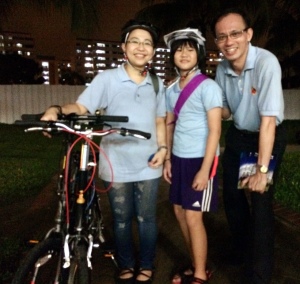Today’s TODAY headline reads, “Two-thirds S’porean core in all sectors a firm target.”
The Manpower Minister, Mr Lim Swee Say had say that “The Government will hold fast to its goal of having a two-thirds Singaporean core in the economy, and this will be the structure of the country’s workforce in the ‘medium to long term’.”
This two-thirds target was first established in 2010. Mr Lim’s predecessor, then Acting Manpower Minister Mr Tan Chuan-Jin had also said this during his Committee of Supplies (COS) rounding up speech for the Manpower ministry in 2013.
Mr Tan had said, “First, we are watching very closely the growth rate of our foreign workforce. We want to slow the growth of the foreign workforce significantly in this decade, so that the proportion does not increase significantly beyond the one-third ratio that we adopted in 2010. Last year, our foreign workforce grew by about 67,000, excluding foreign domestic workers. This is still too large, and we have tightened our policies to bring it down further. We will be watching the numbers closely this year sector by sector.”
I had just two months prior to this COS debate, worked with the WP’s team to prepare our alternative proposal to the government’s Population White Paper. The figures were then fresh in my mind. I knew from the government’s own projection that this ratio of one-third foreign manpower did not hold in their own projections in their own White Paper. So I sought clarifications from Mr Tan. Below is an extract of the debate on 14 March 2013 from parliament’s records:
================================
The Chairman: Before I call the next two Members, I note that Mr Dhinakaran and Mr Yee Jenn Jong have been raising their hands very diligently. The reason I did not call you earlier is because you did not raise any cuts under this Head and, therefore, I am giving all the other Members the first right. I will come to you, Mr Yee Jenn Jong.
Mr Tan Chuan-Jin: I thank Mr Yee for the question and the opportunity to clarify. When we are looking at the ESC’s recommendations, I think we are looking at keeping to about a third where we can, and we are really looking at this decade. For the following decade, the dynamics are a bit different. So for this decade, depending on how it unfolds, with the measures taking place, we would aim to hover at or around one-third if we can. I think we can probably manage to do that but it will be painful. But beyond that, of course, as you all know, by 2020 our own domestic labour force growth will basically end up at about zero. So whatever growth we have thereafter will largely be foreign labour growth. So what happens in the following decade? A lot depends on productivity. A lot depends on where we are in terms of restructuring efforts which is why this phase is particularly important. So it is really about one-third for this decade until about 2020.

Chart 3.4 of the Population White Paper (source: http://population.sg/whitepaper/resource-files/population-white-paper.pdf)
================================
In his reply, Mr Tan had admitted that the one-third target is possible only for this decade. That I agree with. Whilst doing our own computations for alternative models, we had then studied all the publicly available numbers about population in Singapore. There will be net addition to the local workforce from 2013 till 2020, the end of this decade. This is because there will be more Singaporeans turning of age to be included into the workforce than there are Singaporeans retiring. Beyond 2020, the numbers are horrible. In order to get the kind of economic growth the government had wanted in the White Paper, there has to be more addition of foreign labour without any addition of local manpower. How much to add will depend on productivity growth, which the government had set a target of 2-3%. Sadly, this productivity growth has been near zero or negative in recent years.
So Mr Lim’s comments that the two-thirds Singaporean core will be something for the ‘medium to long term’ is rather puzzling. What is ‘medium to long term’? His predecessor had already agreed with me that “by 2020 our own domestic labour force growth will basically end up at about zero. So whatever growth we have thereafter will largely be foreign labour growth.” and that “it (foreign workforce) is really about one-third for this decade until about 2020.”
At the point that I had asked the question in March 2013, based on available manpower data of 2012, locals made up 63.0% of the workforce. By 2014, this figure has dropped to 61.9%. It was 62.1% in 2013. (Source: http://stats.mom.gov.sg/Pages/Labour-Force-Summary-Table.aspx)
| Mid 2012 | Mid 2013 | Mid 2014 | |
| Total Workforce (‘000) | 3,361.8 | 3,443.7 | 3,530.8 |
| Local Workforce (‘000) | 2,119.6 | 2,138.8 | 2,185.2 |
| % Local | 63.0% | 62.1% | 61.9% |
Figure 1: Summary of data from MOM’s website
Is Mr Lim’s definition of long-term up to 2020 only? If it is beyond 2020, how is he going to achieve that because even with a growing local workforce in this current decade, the ratio has been declining well past the two-thirds ratio already while productivity has failed to improve.
What do you think?

